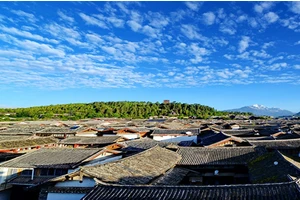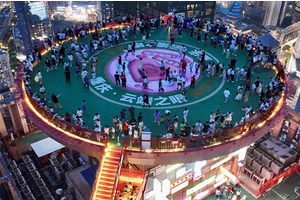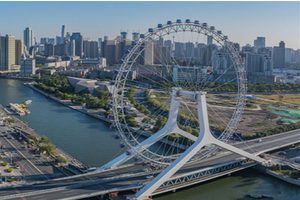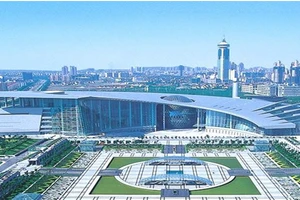Susai tourism
The ancient city of Sousse is located in a special geographical position at the northern end of Africa, adjacent to the Mediterranean Sea in the north and facing Italy across the Tunis Strait. Bordering Algeria to the west; The southeast is connected with Libya. Covers a vast area, with a total area of 164,150 square kilometers and a coastline of 1,200 kilometers.
The topography is diverse, with mountains in the north, and the highest peak, Sheanabi Mountain, is 1544 meters above sea level. The mountainous climate is interlaced with the tropical Mediterranean climate. The central and western regions are plateaus and lowlands, and there are two large seasonal salt marshes, especially the Cerid salt marshes in the southwest. The south is integrated into the Sahara Desert, and the Mai gerda River is the longest river in China, with a total length of 365 kilometers.
The economy of the ancient city of Susai is based on agriculture. 60% of the population is engaged in agriculture. The main crops include wheat, barley, olives, grapes and dates. The output of olive oil is world-famous. In industry, phosphate and oil exploitation are the pillar industries, and textile, tanning, pottery and carpet industries have also developed. Tourism is very active, and the annual "Desert Festival" attracts the attention of the whole world, and hotel facilities rank first in Africa and Arab countries.
In terms of transportation, the ancient city of Susai has developed railways (more than 2,190 kilometers) and highways (more than 20,000 kilometers), and has two fleets and two state-owned airlines. Economic partners are mainly the European Union, especially France, Italy and Germany. In terms of education, basic compulsory free education is implemented, and the primary and secondary education system is a nine-year system, with higher education institutions such as Zaidun University, Tunisia University of Literature, Arts and Humanities, Science and Technology and Medical University.
Surrounding cities such as Kailuwan, as a famous commercial port in ancient times, are mainly responsible for the export of agricultural and mineral products, and are connected with the mining area by railway. As the northernmost port city, modern port facilities make it strategically important, with aquatic products processing and oil extraction industries.
Extended data
Sousse is the third largest city in Tunisia, located in Hammamet Bay in the Mediterranean Sea, and is known as the "Garden Port of the Mediterranean". Founded in the 9th century BC. There are city walls, religious buildings, princes' houses, underground tombs and folk houses built since the Middle Ages, with diverse architectural styles. Susai Museum has a collection of Tunisia's national art treasures-mosaics, with the oldest works dating back 3500 years.
Susai, also known as Susa or Susa, is an important port city in Tunisia, located on the south bank of the Gulf of Mamat in the Mediterranean Sea. By 1984, the population of this city was about 84,000. The history of this city can be traced back to the first century BC, when it was a famous Phoenician city. However, in the seventh century, the city suffered damage and was later rebuilt. Today, Susai is the capital of Susai province, which plays a significant role in agricultural production and industrial activities in the northeast.
Susai has a developed industrial system, including large cotton textile mills and factories that produce products such as oil pressing, wool spinning, tanning and canned fish. In handicraft industry, traditional crafts such as embroidery, lace and jewelry making are also very prosperous. Port is an important economic lifeline of Susai, mainly exporting apatite and olive oil. In addition, iron ore and leather are also important export commodities. The city also retains historical sites such as medieval city walls, providing visitors with rich historical and cultural experiences.
Susai is not only an economic center, but also a new tourist city, attracting domestic and foreign tourists to explore history, enjoy seaside scenery and experience rich handicraft culture.
Extended data
Sousse is the third largest city in Tunisia, located in Hammamet Bay in the Mediterranean Sea, and is known as the "Garden Port of the Mediterranean". Founded in the 9th century BC. There are city walls, religious buildings, princes' houses, underground tombs and folk houses built since the Middle Ages, with diverse architectural styles. Susai Museum has a collection of Tunisia's national art treasures-mosaics, with the oldest works dating back 3500 years.
Prev: Xisha open tourism
Next: Shiling travel






